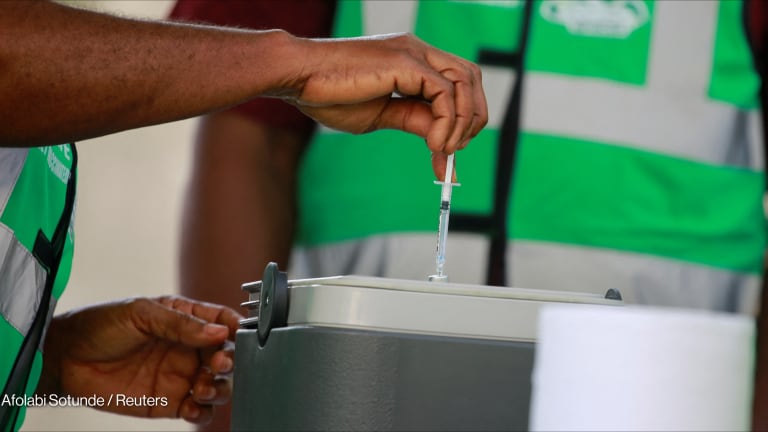
The World Health Organization, national authorities, and other health bodies are investigating what’s causing acute severe hepatitis among children and adolescents, which has so far been mostly found in Europe and the United States. WHO says it’s likely to be occurring in other locations and has advised countries to closely monitor for potential cases.
Dr. Richard Pebody, lead of the high-threat pathogen team at WHO Europe, said the unexplained acute, severe hepatitis cases first reported in Europe is a “rare phenomenon.” But as WHO is “seeing more cases than expected” it has issued an alert for countries to ask parents and clinicians to be aware and report any symptoms of jaundice in children, which to date cover the bulk of reported cases.
According to WHO’s latest disease outbreak news that came out April 23, at least 169 cases of acute severe hepatitis have been reported from 11 countries in the WHO European region and the United States. The cases were seen among children and adolescents aged 1 month to 16 years old. WHO said at least one death has been reported but did not reveal further details for “confidentiality reasons.”
The must-read weekly newsletter for exclusive global health news and insider insights.
On Tuesday, Japan confirmed a case of acute hepatitis, and Canadian health officials said they are also investigating cases, although it’s unclear yet if it’s linked to the cases in Europe and the U.S. The European Centre for Disease Prevention and Control said Tuesday the number of unexplained cases are now around 190, according to a Reuters report.
Pebody said it’s important that parents and clinicians report cases to public health authorities. “In that way, we can hopefully try and understand better what's going on here,” he told Devex.
“It certainly can and is likely to be occurring elsewhere,” he said.
“Now that the message has been disseminated, I would anticipate that we will start to get reports from other parts of the world. But you can imagine that in places where surveillance systems are weaker, then there may be challenges in picking up these types of cases,” he added.
Why children?
WHO doesn’t have all the details including the current status of all reported cases to date, although in its report, at least 17 required liver transplants. Pebody said some of them would have already recovered and gone home, with some of the cases in Europe dating back to January 2022.
But why only children? Pebody said the initial alert came from a clinician who found unusual symptoms in pediatric cases, which then led to subsequent case searching.
“As you can see, the case definition is based on children so we are looking at children, so it’s kind of restricted,” he said.
It’s possible that cases could be happening in adults, but that requires further investigation, he said.
COVID-19 testing sees massive decline, leaving countries vulnerable
Testing for COVID-19 has fallen globally by up to 90%, meaning that the world is "becoming blind" to the evolution of the pandemic.
Researchers are working on multiple hypotheses for why young children are getting severe liver disease. One hypothesis is due to adenovirus, which typically causes respiratory and gastrointestinal symptoms, and which has seen an uptick in cases in the United Kingdom as people start mingling again, as COVID-19 restrictions are eased.
“As these young children may not have been exposed to adenovirus before … it is likely to be an important explanation for why it's young children and possibly why we're seeing this unusual severity presentation,” Pebody said.
According to WHO, adenovirus was detected in at least 74 cases, and 19 were detected with COVID-19 and adenovirus co-infection.
But adenoviruses are “very rarely associated with hepatitis,” particularly in healthy children, and there may be other factors involved, which researchers and public health authorities are carefully looking into, he said.
One of the things researchers and public health authorities are looking at is sequencing the virus to determine if there are any subtle changes in it. But they’re also looking at the hypothesis of whether the cases have something to do with the co-circulation of adenovirus and COVID-19 in communities.
“All these avenues need to be properly explored. So there's a lot of open questions at this point. And understanding that will obviously help refine what are the best prevention and control measures,” he said.
“But at the moment … the message is don't forget normal hygiene measures [such as] hand-washing, good respiratory hygiene, that'll help prevent the spread of adenovirus together with other common infections as well,” he added.
Not yet a global health emergency
Asked whether discussions are taking place within WHO to convene experts to discuss whether this constitutes a public health emergency of international concern, Pebody said “I think at this stage the risk assessment isn't in that place at the moment.”
“We're sort of closely monitoring the situation, working with the public health authorities who have been investigating these cases, and we'll obviously keep it under very, very close watch,” he said.
“But I think the other key message that we want to get over is that certainly that based on what we know at the moment, there’s no reason to recommend things like travel restrictions and those sorts of things,” he added.









